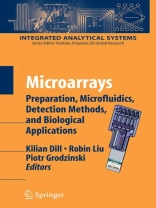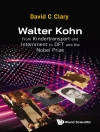Combinatorial chemistry is used to find materials that form sensor microarrays. This book discusses the fundamentals, and then proceeds to the many applications of microarrays, from measuring gene expression (DNA microarrays) to protein-protein interactions, peptide chemistry, carbodhydrate chemistry, electrochemical detection, and microfluidics.
Inhoudsopgave
Overview and New Detection Method.- The Current Status of DNA Microarrays.- Electrochemical Detection on Microarrays.- Fluidic Manipulation and Microarrays.- Fully Integrated Microfluidic Device for Direct Sample-to-Answer Genetic Analysis.- Integrated Microfluidic Devices for Automated Microarray-Based Gene Expression and Genotyping Analysis.- Statistical Data Evaluation on Microarrays.- Intensity Concentration Relationships for Electrochemical Detection.- Applications.- Genotyping Arrays.- Peptide-Based Microarray.- Protein Microarrays for the Detection of Biothreats.- Photo-Generation of Carbohydrate Microarrays.- Expression Profiling Using Microfluidic Living Cell Arrays.- New Approaches to the Synthesis of Addressable Microarray Molecular Libraries.- e Sensor®A Microarray Technology Based on Electrochemical Detection of Nucleic Acids and Its Application to Cystic Fibrosis Carrier Screening.- Future Improvements in Microarray Sensing.- Use of Redox Enzymes for the Electrochemical Detection of Sequence-Specific DNA and Immunochemical Entities.- Biochip Platforms for DNA Diagnostics.- Mag Array Biochips for Protein and DNA Detection with Magnetic Nanotags: Design, Experiment, and Signal-to-Noise Ratio.- Bar Coding Platforms for Nucleic Acid and Protein Detection.- Electrochemical Nanoparticle-Based Sensors.












